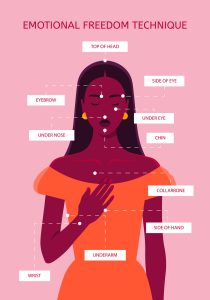Isaiah 9:6-7 stands as a monumental piece of scripture, revered by many for its profound anticipation of the coming of Jesus Christ and his Earthly ministry. This passage not only foretells the birth of Jesus but also intricately describes His nature and the role He is to play in the lives of believers. It refers to Jesus as a “Wonderful Counselor,” among other titles, highlighting an aspect of Christ’s ministry that offers deep insights into the fusion of divine guidance with the principles of counseling. Exploring this passage opens the door to understanding how biblical teachings can enrich the fabric of contemporary Christian counseling, grounding spiritual growth firmly in the bedrock of God’s love. Christ is the paradigm for all counselors. His virtue and ability to listen and advise with love and compassion all point to Him as the most wonderful Counselor

This article aims to delve into how the prophecy of Isaiah 9:6-7 finds its fulfillment in Jesus, examining His qualities as a Wonderful Counselor and what it means for individuals seeking guidance and solace in their lives. It will explore the role of Jesus in counseling, stressing the importance of listening to His teachings and applying biblical principles in the counseling process. Additionally, this exploration will cover aspects of professional Christian counseling, including what Christian counselors do, the importance of Christ-first counseling, and how individuals can overcome personal barriers to spiritual growth. By drawing upon these themes, readers will gain a comprehensive understanding of how integrating Jesus’ teachings can enhance the effectiveness of counseling for Christians, fostering a deeper connection with God’s love.
Please also review AIHCP’s Christian Counseling Certification. The program is online and independent study and open to pastors and others in spiritual care who look to emulate Christ and become certified in the field of Christian Counseling.
The Prophecy and Its Fulfillment in Jesus
Isaiah 9:6 stands as a cornerstone of biblical prophecy, heralding the arrival of a divine figure who would bear the weight of governance and embody the essence of God’s eternal plan. This prophecy, deeply embedded in the fabric of Christian theology, foretells the birth of Jesus Christ, a pivotal event that marks both a fulfillment and a beginning in the biblical narrative.
Isaiah 9:6 Explained
The verse explicitly states, “For to us a child is born, to us a son is given, and the government will be on his shoulders. And he will be called Wonderful Counselor, Mighty God, Everlasting Father, Prince of Peace.” This passage is not merely a prediction; it encapsulates the essence of Jesus’ mission and the characteristics he embodies. The child, referred to here, is distinctively marked by titles that transcend human leadership, pointing directly to the divine.
Historically, this prophecy served as a beacon of hope for the people of Judah, promising deliverance from darkness and oppression through a leader whose reign would be characterized by peace and righteousness. The mention of a child who would shoulder the government underscores a dual expectation of innocence and sovereign authority, culminating in the leadership of Christ.
The Titles of the Messiah
The titles ascribed to Jesus in Isaiah 9:6 are profound, each reflecting a unique aspect of his divine and human roles. “Wonderful Counselor” indicates wisdom beyond human capabilities, highlighting Jesus’ role in guiding his followers through the complexities of life with divine wisdom. “Mighty God” emphasizes his divine nature, affirming the Christian belief in Jesus’ divinity and his integral role in the Godhead.
“Everlasting Father” suggests a timeless, enduring leadership, portraying Jesus as a paternal figure whose guidance and protection are perpetual. Lastly, “Prince of Peace” encapsulates his mission to reconcile humanity with God, bringing an eternal peace that surpasses political and temporal solutions.
The fulfillment of this prophecy is seen in the New Testament, where Jesus’ birth, life, ministry, and resurrection align with the characteristics and roles foretold by Isaiah. His governance is not of political strife but of the hearts and spirits of his followers, establishing a kingdom based on justice, peace, and righteousness.
The prophecy of Isaiah 9:6-7, therefore, is not just a foretelling of events but a declaration of the enduring hope and eternal governance brought forth by Jesus Christ. It serves as a foundational text that underscores the messianic expectations and the profound nature of Jesus’ mission as understood in Christian theology. Through these titles, the prophecy articulates a multifaceted understanding of Jesus’ identity and role, which continues to resonate with believers worldwide.
Jesus’ Qualities as a Wonderful Counselor

Exploring ‘Wonderful’
The term “Wonderful Counselor,” as used in Isaiah 9:6, carries a depth that transcends common usage today. The original Hebrew connotation of “wonderful” implies something miraculous, incomprehensible, and awe-inspiring. This description of the Messiah, Jesus Christ, suggests an extraordinary capacity that goes beyond human understanding, marking Him as a counselor whose wisdom and guidance are divine in nature. His counsel is not merely helpful but filled with wonder, leading individuals to marvel at the profound insights and solutions He provides.
Jesus’ Exemplary Deeds
Jesus Christ demonstrated His wonderful nature through various actions during His time on Earth. From His miraculous birth to His resurrection, each event in His life underscored His divine capabilities. He healed the sick, such as restoring sight to the blind and curing diseases with a touch or a word, showcasing His authority over physical ailments. His teachings, filled with deep wisdom, astonished many, including those who were well-versed in religious law.
Furthermore, Jesus led a life without sin, which is in itself a testament to His perfect nature (Hebrews 4:15). His resurrection, a pivotal moment, not only fulfilled prophecies but also displayed His power over death, affirming His role as the Mighty God and Everlasting Father. These acts of healing, teaching, and perfect moral standing highlight His qualifications as a “Wonderful Counselor,” capable of providing unmatched guidance and insight.
Through His interactions, Jesus also addressed the deeper needs of individuals, diagnosing and meeting their spiritual and emotional requirements. For instance, His encounter with the Rich Young Ruler revealed Jesus’ ability to discern the heart’s intentions and provide counsel that, although challenging, aimed at true spiritual growth and freedom from material bondage.
In summary, the qualities of Jesus as a Wonderful Counselor are vividly demonstrated through His divine attributes and His earthly ministry. His actions and teachings not only fulfill the prophecy of Isaiah but continue to offer profound guidance and wisdom to all who seek His counsel today.
Jesus in the Role of Counselor
Historical Context
Jesus Christ, often heralded as the ultimate model for counselors, exemplifies the integration of divine wisdom and human interaction. His role as a counselor was not confined to the mere dispensation of advice but was deeply embedded in His interactions with individuals across various contexts. Historically, Jesus acted as a counselor in the broadest sense—He understood the human psyche intricately, as evidenced by His dual nature as both divine creator and incarnate Son of God.
Throughout His earthly ministry, Jesus engaged with individuals from all walks of life, addressing their spiritual, emotional, and physical needs. His approach was not limited to formal settings but was carried out wherever He went—be it streets, weddings, or wellsides. This omnipresent availability highlights His commitment to meeting people where they were, emphasizing His role as a shepherd and overseer of souls.
Biblical Illustrations
The Gospels are replete with instances that showcase Jesus’ profound ability to counsel and transform lives. One of the most poignant illustrations is His interaction with the Samaritan woman at the well (John 4:1-42). Here, Jesus, though physically weary, prioritizes the woman’s deeper spiritual thirst, offering her “living water” that symbolizes eternal life and fulfillment beyond earthly means. This encounter not only addresses her immediate social and personal issues but also extends an invitation to a transformed life.
Another significant example is found in Jesus’ response to the adulterous woman brought before Him (John 8:3-11). Instead of condemning her, Jesus uses the situation to teach profound lessons on sin, grace, and redemption, effectively counseling both the accused and her accusers. His approach was not to inflict shame but to restore dignity and encourage a path free from sin.
Jesus’ ability to delve into the depths of human experience and offer transformative guidance is further exemplified in His interactions with His disciples, particularly in restoring Peter after his denial (John 21:15-23). Here, Jesus not only reassures Peter of his worth but also reorients him towards his role in the early Church, demonstrating how effective counseling can lead to personal restoration and fulfillment of one’s calling.
These biblical accounts underscore Jesus’ mastery in counseling, marked by a deep understanding of human nature, a compassionate approach to individual struggles, and a focus on holistic transformation. His legacy as the Wonderful Counselor continues to influence Christian counseling today, encouraging a reliance on His wisdom and the Holy Spirit’s guidance in all manners of personal and communal challenges. Through these illustrations, believers are reminded of the profound impact that wise, empathetic, and spiritually grounded counseling can have on individuals and communities alike.
Listening to Jesus as a Counselor

Empathy and Wisdom
Jesus’ approach to counseling is deeply rooted in empathy, a non-negotiable virtue that enables a counselor to connect emotionally and understand the sufferings of others. His interactions throughout the Gospels demonstrate a profound ability to empathize with people from all walks of life, regardless of their circumstances. For instance, when observing the crowds, Jesus not only recognized their physical ailments but also understood the spiritual and emotional burdens they carried. This depth of understanding was paired with an unparalleled wisdom that allowed Him to address not just the symptoms but the root causes of their struggles.
Empathy in counseling according to Jesus involves a genuine connection with individuals, acknowledging their suffering without judgment. This empathetic connection is crucial as it fosters a safe environment where individuals feel understood and valued, paving the way for effective counseling. Jesus exemplified this through His actions, whether it was through healing the sick or offering words of comfort and guidance. His ability to be present in the moments of people’s deepest needs, offering both understanding and actionable wisdom, sets a foundational example for all who provide counsel.
Biblical Encouragement
The role of encouragement in counseling cannot be overstated, and Jesus mastered this through His words and deeds. Biblical encouragement, as demonstrated by Jesus, involves more than mere compliments; it is about directing individuals towards spiritual truths that uplift and edify. This form of encouragement is evident when Jesus interacted with those around Him, constantly pointing them back to the truths of God’s word and His promises. For example, His discussions often included references to Scripture that provided reassurance and hope, such as His reminders of God’s omnipresence and the ultimate victory over sin and death.
Encouragement from a biblical perspective involves recognizing and affirming God’s work in an individual’s life, which can significantly impact their spiritual and emotional well-being. It helps individuals see beyond their current struggles to the greater purpose and plan God has for them. Jesus’ method of encouragement was always filled with grace and truth, providing a balance that not only comforted but also motivated individuals towards spiritual growth and reliance on God.
In counseling, adopting Jesus’ approach means integrating empathy with the wisdom of Scripture, ensuring that encouragement is not just uplifting but also transformative. This dual application of empathy and biblical encouragement helps counselors address the needs of the soul with sensitivity and depth, following the exemplary model set by Jesus, our Wonderful Counselor.
Elements of Effective Counseling
Effective counseling in a Christian context involves a balanced integration of four key elements: commendation, comfort, conviction, and challenge. Each component plays a crucial role in fostering spiritual growth and personal transformation, aligning closely with biblical principles.
Commendation and Comfort
Commendation in counseling involves identifying and affirming thoughts, feelings, and behaviors that align with scriptural wisdom. This process is vital for building confidence and instilling hope within counselees. It requires a deep understanding of the individual’s experiences and a diligent search for Christlike behaviors, even amidst significant personal struggles. For example, in Revelation 2:2-3, Jesus commends the church of Ephesus for their deeds and perseverance, acknowledging their strengths before addressing areas of improvement. This approach not only motivates but also opens the heart to receive further guidance.
Comfort, the second element, entails offering words that bring peace, relief, and consolation to those in distress. It involves a profound understanding of the individual’s pain and applying God’s promises specifically to their situation. However, true Christian comfort goes beyond mere sympathy; it combines empathy with actionable steps, preventing the comfort zone from becoming a stagnation point. It challenges the individual to move beyond their current state towards greater spiritual maturity, balancing sympathy with the necessity for growth.
Conviction and Challenge
Conviction involves making individuals aware of how their thoughts, feelings, or actions may have strayed from God’s laws. This component is crucial as it confronts the individual with the reality of their sin or shortcomings in a loving yet truthful manner. It’s about bringing to light the areas that need correction, which is essential for genuine repentance and spiritual growth.
The final element, challenge, focuses on helping individuals devise and implement a plan that aligns their thoughts, feelings, and actions with biblical teachings. This proactive step is vital for ensuring that the counseling process leads to tangible changes in behavior and mindset. It encourages the counselee to apply scriptural wisdom actively in everyday life, thereby promoting continuous spiritual and personal development.
By weaving together these four elements—commendation, comfort, conviction, and challenge—Christian counseling can effectively guide individuals towards a deeper relationship with Christ, marked by a transformative and renewing journey of faith. This holistic approach not only addresses immediate issues but also fosters long-term spiritual resilience and growth.
Seeking Professional Christian Counseling

While the Bible does not explicitly address the profession of counseling, it strongly advocates for the wisdom and safety found in seeking counsel. Proverbs 11:14 and 12:15, among other verses, endorse the value of guidance, portraying it as a wise and necessary pursuit for managing life’s challenges. This biblical endorsement forms the foundation for the practice of professional Christian counseling, which integrates scriptural wisdom with therapeutic expertise.
AIHCP offers a Christian Counseling Certification for clergy, pastors, and others in pastoral care. Licensed counselors and other Human Service professionals, as well as healthcare professionals also qualify for the program.
Biblical Support
Scripture does not directly mention professional counseling but offers broad support for the concept through its endorsement of seeking wisdom and multiple counselors. For instance, Proverbs 19:20 and 13:10 suggest that wise counsel is crucial for personal well-being and safety. These passages collectively imply that while the advisors in biblical times were not labeled as professional counselors, the act of seeking and heeding wise counsel aligns with biblical principles.
Attributes of Professional Counselors
Professional Christian counselors are distinguished by their specialized training and commitment to integrating biblical truth with counseling practices. According to the Cambridge Dictionary, the term “professional” implies a level of specialized education and training which professional Christian counselors embody. They often hold credentials such as Licensed Mental Health Counselor (LMHC) or Licensed Professional Counselor (LPC), highlighting their expertise in both spiritual and psychological disciplines.
These counselors are adept at navigating the complexities of human behavior and mental health through a biblical lens. They utilize their training to identify root causes of personal struggles and employ scriptural principles to guide their therapeutic approaches. This dual expertise enables them to offer not only psychological relief but also spiritual growth and healing.
Professional Christian counselors also respect the distinction between different counseling methodologies. While some adhere to Nouthetic counseling, which focuses on sin as the root of problems and uses scripture as the sole corrective, others recognize the limitations of this approach. They understand that some issues require more comprehensive psychotherapeutic interventions, alongside spiritual guidance.
In practice, these counselors do not impose their worldview but facilitate the discovery of truth in a caring manner. They are trained to use biblical wisdom and professional therapeutic techniques to help individuals navigate their challenges while fostering spiritual growth.
By integrating professional expertise with a deep understanding of biblical principles, Christian counselors provide a unique and vital service that supports both mental health and spiritual well-being. Their work not only addresses immediate psychological needs but also encourages a deeper relationship with Christ, aligning with the overall goal of Christian counseling to bring about holistic healing and spiritual maturity.
Overcoming Personal Barriers
Common Obstacles
One of the significant challenges many individuals face in their spiritual journey is the internalization of an idealized ‘quiet time’ with God. This often envisioned scenario involves uninterrupted, serene moments of prayer and Bible study, typically imagined in the early morning hours with no distractions. However, for most, such a perfect setting is unattainable, leading to discouraged attempts at spiritual practices. It is crucial to recognize that spiritual growth is not confined to these idealized moments. Instead, individuals can engage with God in various everyday situations such as during daily commutes, in work meetings, or even while performing household chores.
Moreover, the pursuit of spiritual growth is often hindered by the distractions of daily life. The allure of materialism, the pressures of societal expectations, and the pursuit of pleasure can clutter the soul, making it difficult to maintain a close and intimate relationship with God. Additionally, sin, whether overt or subtle, creates barriers between individuals and God, affecting their prayer life and overall spiritual health. The recognition and acknowledgment of these sins, followed by genuine repentance, are essential steps toward spiritual renewal.
Biblical Encouragement
To navigate these barriers, the Bible offers profound encouragement and practical advice. Scripture teaches that spiritual growth requires intentional effort and is a lifelong process. Individuals are encouraged to “cast all your anxiety on him because he cares for you” (1 Peter 5:7), which underscores the importance of trusting God with all aspects of life, including the challenges and obstacles that hinder spiritual growth.
Furthermore, relationships play a crucial role in spiritual development. Associating with negative or judgmental individuals can severely limit one’s spiritual progress. Instead, fostering relationships with those who embody Christlike attributes can enhance one’s faith and encourage spiritual maturity. The Bible also warns against the dangers of legalism and fear, which can stifle spiritual freedom and growth.
In overcoming personal barriers to spiritual growth, it is helpful to create environments that encourage engagement with God. Keeping spiritual resources accessible, such as Bible apps or scripture cards around living and workspaces, can remind individuals to turn their thoughts to God throughout the day. This practice helps in maintaining a constant connection with God, enabling individuals to overcome the distractions and challenges that life presents.
By addressing these common obstacles with biblical wisdom and practical steps, individuals can foster a deeper relationship with God, overcoming the barriers that hinder their spiritual growth and embracing a life of faith and fulfillment.
Applying Jesus’ Teachings in Counseling
Practical Applications
In applying Jesus’ teachings to counseling, it is essential to recognize the foundational role that biblical principles play in promoting mental and emotional well-being. According to insights derived from scripture, God provides a blueprint for mental health that, while not exhaustive, guides individuals toward maintaining a positive mental direction. For instance, Philippians 4:6-7 offers a clear directive to not be anxious but instead, through prayer and thanksgiving, present requests to God, allowing His peace to guard one’s heart and mind. This approach aligns with the counseling practice of encouraging clients to focus on the present moment and manage anxieties by trusting in divine providence.
Furthermore, Proverbs 14:16 highlights the importance of wisdom and self-control—qualities that Jesus epitomized and that are crucial in counseling settings. Counselors can guide clients to adopt these traits, fostering decision-making that shuns recklessness and embraces thoughtful consideration of consequences. This biblical insight supports the therapeutic goal of helping clients develop healthier emotional responses and behavioral patterns.
Living by His Wisdom
Living by the wisdom of Jesus involves integrating His teachings into daily counseling practices. This includes fostering an environment where clients feel safe and valued, an approach deeply rooted in the empathetic and compassionate manner Jesus demonstrated throughout His ministry. For example, the parable of the Good Samaritan (Luke 10:25-37) teaches the value of mercy and active assistance, principles that can be directly applied in counseling to encourage individuals to support one another in healing and recovery.
Additionally, counselors can draw on the biblical principle of rest as exemplified by Jesus’ own practices. Mark 6:31 emphasizes the necessity of withdrawing from the busyness of life to restore one’s spirit, a practice that can be crucial for both counselors and clients. By advocating for balanced work-rest cycles, as prescribed in the Mosaic Law and exemplified by Jesus, counselors can help clients achieve better mental health and avoid burnout.
Incorporating these teachings requires a counselor to not only share knowledge but also actively listen, empathize, and respond with grace. This mirrors Jesus’ interaction with individuals such as the Samaritan woman at the well, where He provided insights into her life in a gentle yet transformative manner, highlighting the deep connection between spiritual well-being and emotional health.
By applying these biblical principles, counselors can more effectively guide their clients towards healing, demonstrating that the teachings of Jesus are not only spiritually enriching but also fundamentally supportive of mental and emotional health.
Conclusion
Throughout this exploration of Isaiah 9:6-7 and the multifaceted identity of Jesus as the Wonderful Counselor, we have uncovered the profound impacts His teachings hold for both personal growth and the practice of Christian counseling. By examining His life and ministry, we recognize the unmatched depth of wisdom, empathy, and guidance He offers to all seeking solace and direction. These insights not only fulfill ancient prophecies but also serve as the bedrock for integrating faith and counseling, emphasizing the transformative power of applying Jesus’ teachings in our lives and in the support of others.

The journey through scripture and the application of Jesus’ roles in counseling showcases the enduring relevance of His counsel in today’s world. It prompts a deeper engagement with the divine wisdom available to us, encouraging both individuals and counselors to lean into the biblical principles that guide and enrich the human experience. As we continue to navigate life’s complexities, let us draw upon the legacy of Jesus as our Wonderful Counselor, ever-anchored in the hope and healing that His eternal guidance provides, steering us toward a future marked by spiritual growth and emotional well-being.
Jesus is the ultimate Counselor and all Christian Counselors should strive to emulate His approach. Christ is always empathetic but always true and honest. He looks to cause no harm but heal. Likewise, Christian Counselors need to also push forward with the same spirit. AIHCP offers a Christian Counseling Certification for both licensed and pastoral counselors who wish to introduce Christian principles and values into counseling and psychological treatments. The program is online and independent study and open to qualified professionals seeking a four year certification as a Christian Counselor.
FAQs
- What is the significance of Jesus being called “Wonderful Counselor” in Isaiah 9? Jesus is referred to as the “Wonderful Counselor” in Isaiah 9, signifying that He is a knowledgeable leader for His people. This title emphasizes that Christ embodies the perfect counsel, guiding Christians in their faith and life.
- How does the Holy Spirit serve as our counselor? The Holy Spirit plays a crucial role in guiding believers into all truth, revealing and applying the teachings of Jesus Christ to their lives. This divine guidance ensures that believers can fully embrace and live out the teachings of their Wonderful Counselor, Jesus.
- What does Isaiah 9:7 describe? Isaiah 9:7 highlights the eternal nature of Christ’s kingdom. It states that His governance and peace will never end, He will rule on David’s throne with justice and righteousness forever. This prophecy is fulfilled through the zeal of the LORD Almighty.
- What does the Bible convey about God’s role as a counselor? The Bible offers multiple verses that illustrate God as a counselor. For instance, Psalm 16:7 and Psalm 119:24 depict how God provides counsel and wisdom through His words and testimonies, guiding believers towards righteousness and understanding.





















 Written by Veronica Turner.
Written by Veronica Turner. Written by Pat Baker.
Written by Pat Baker.